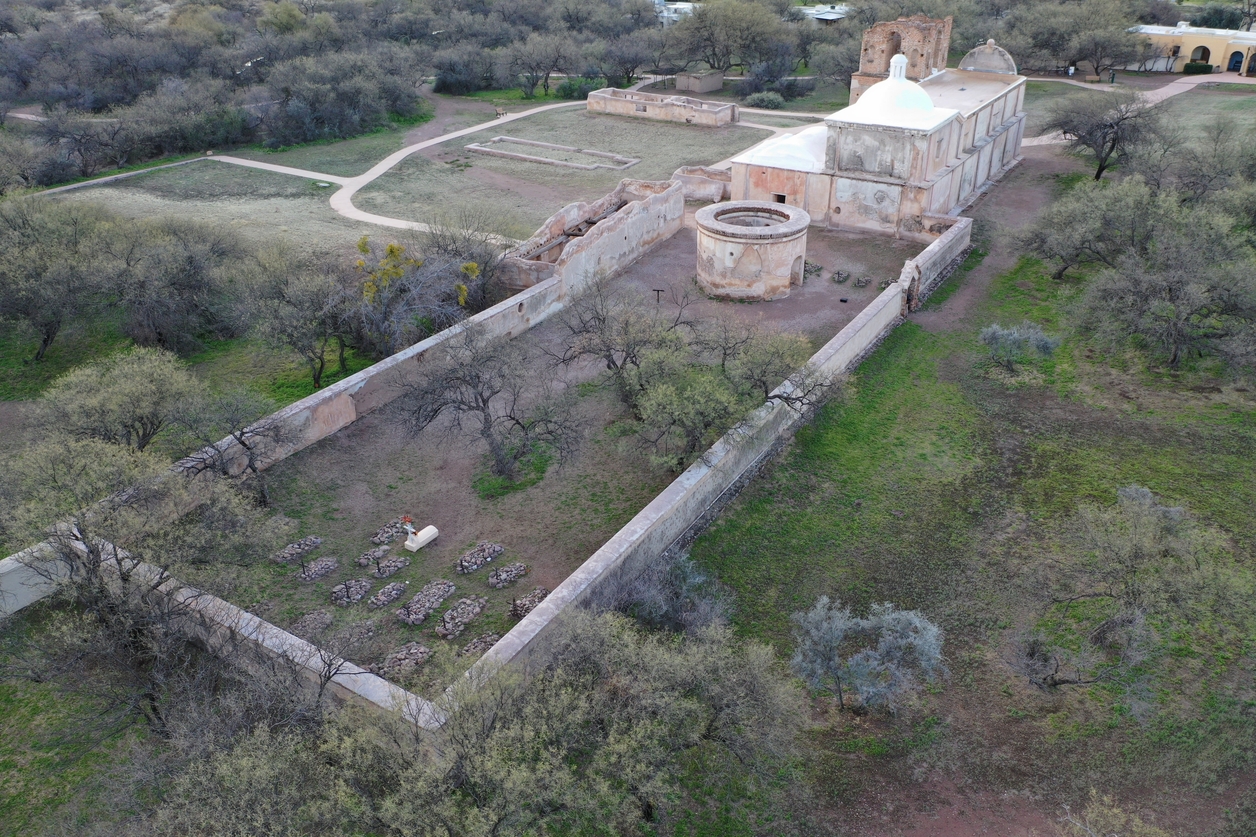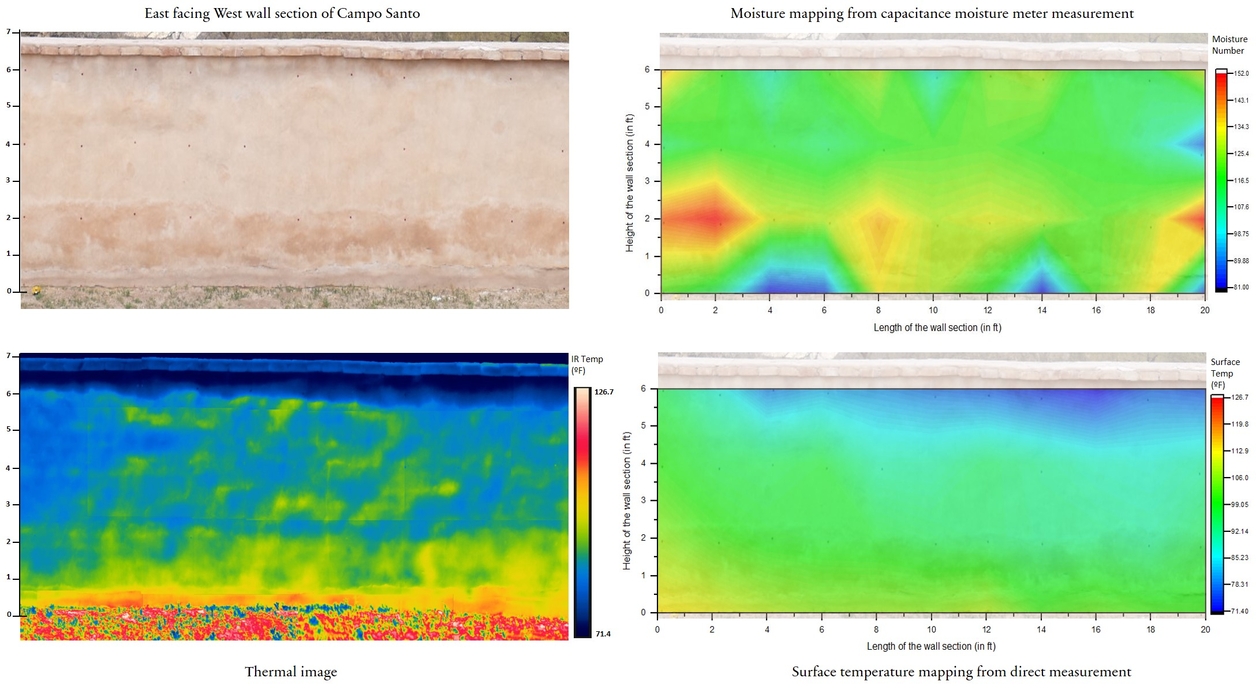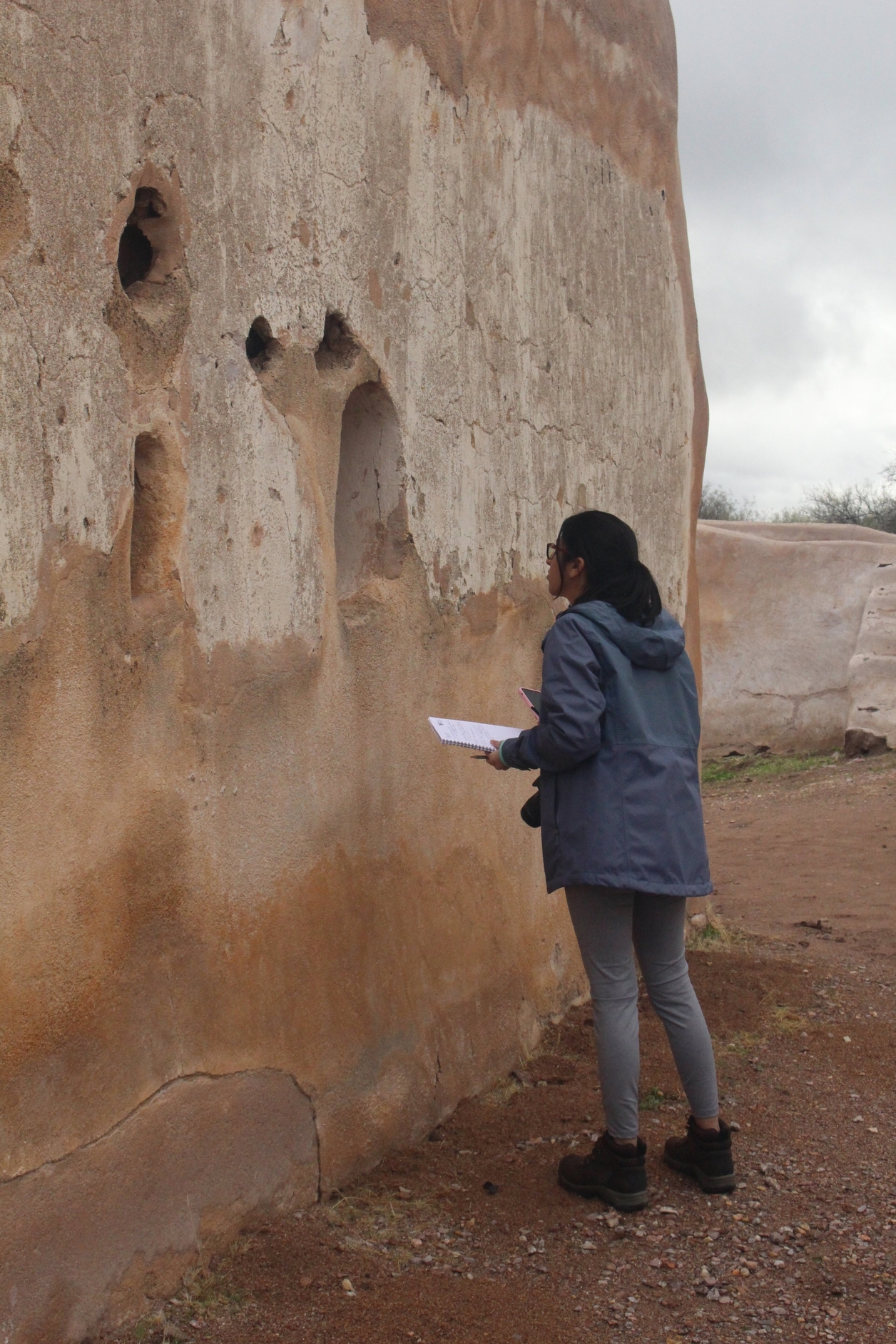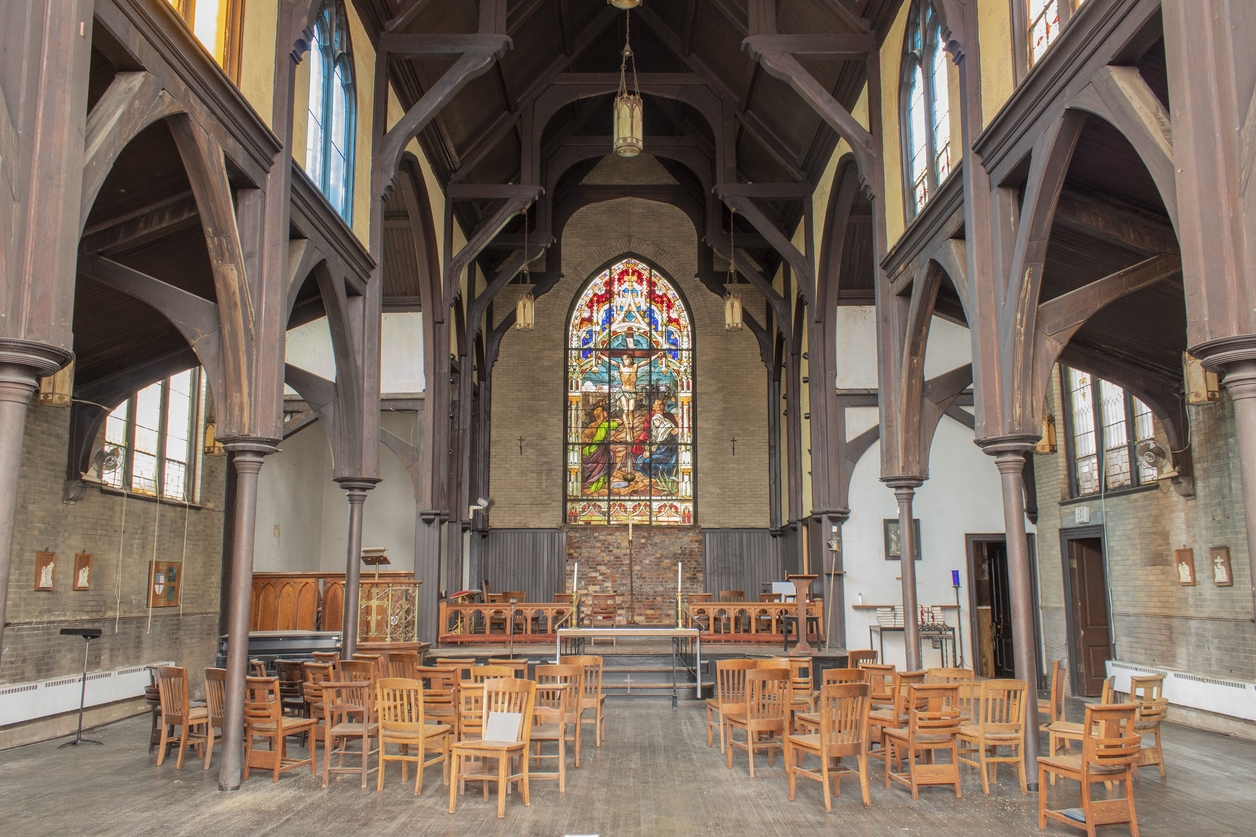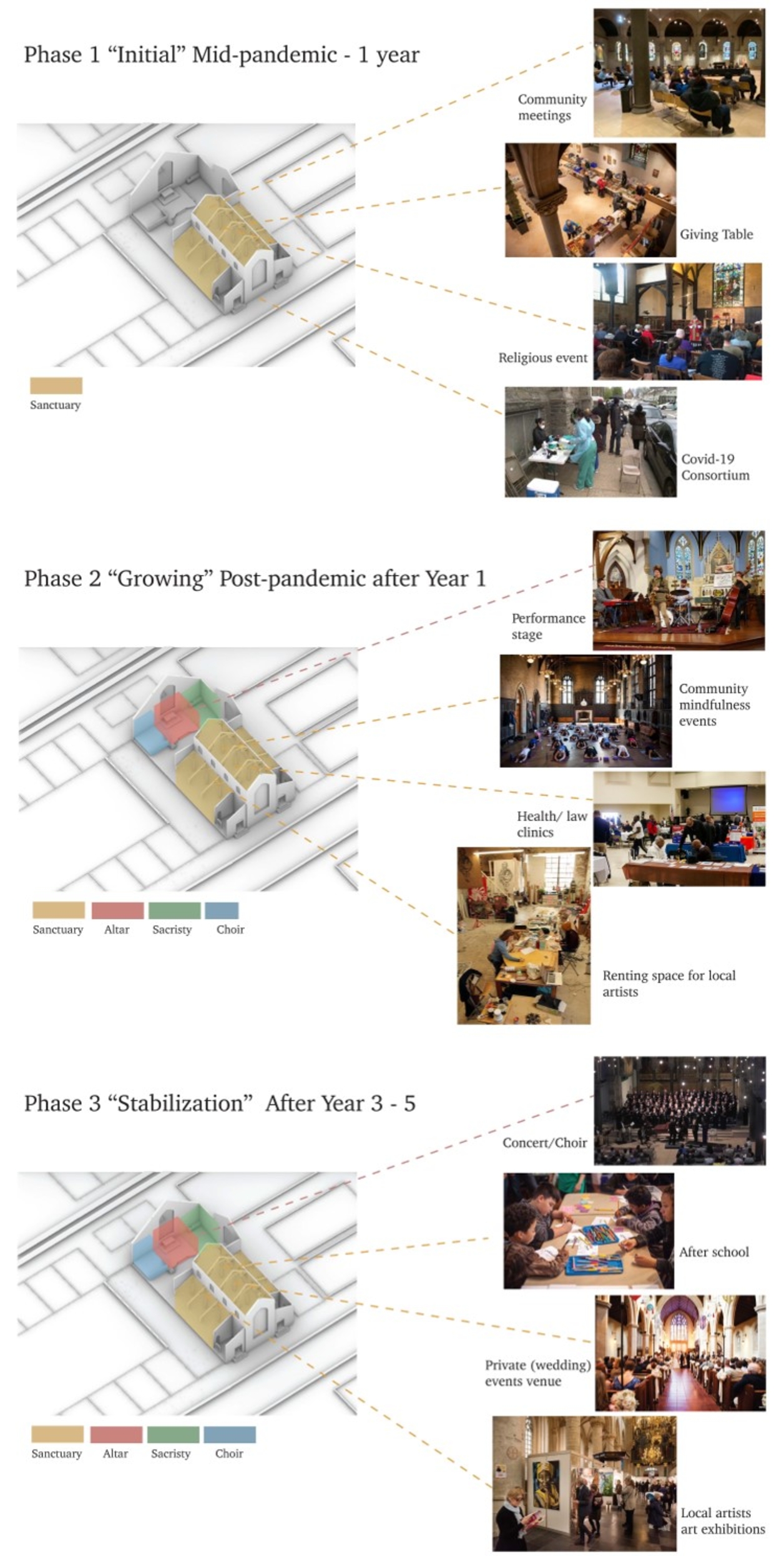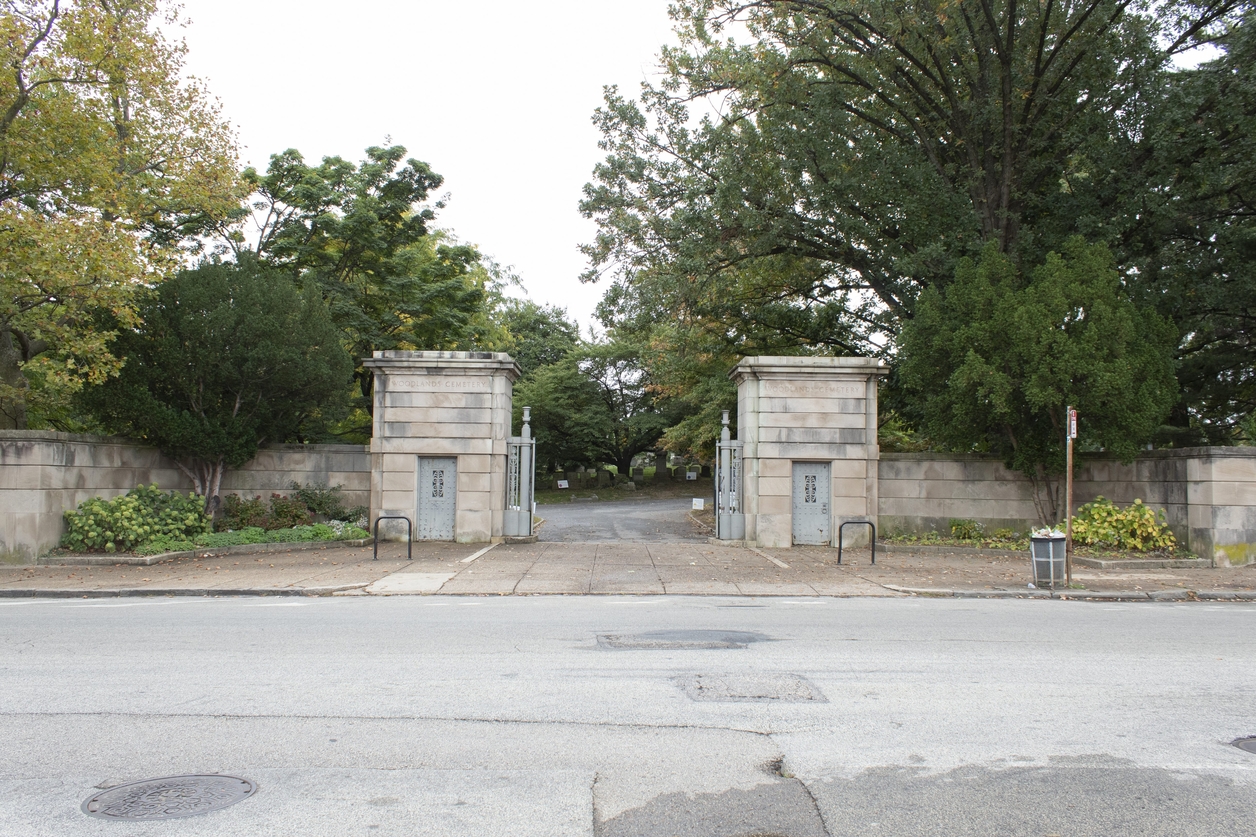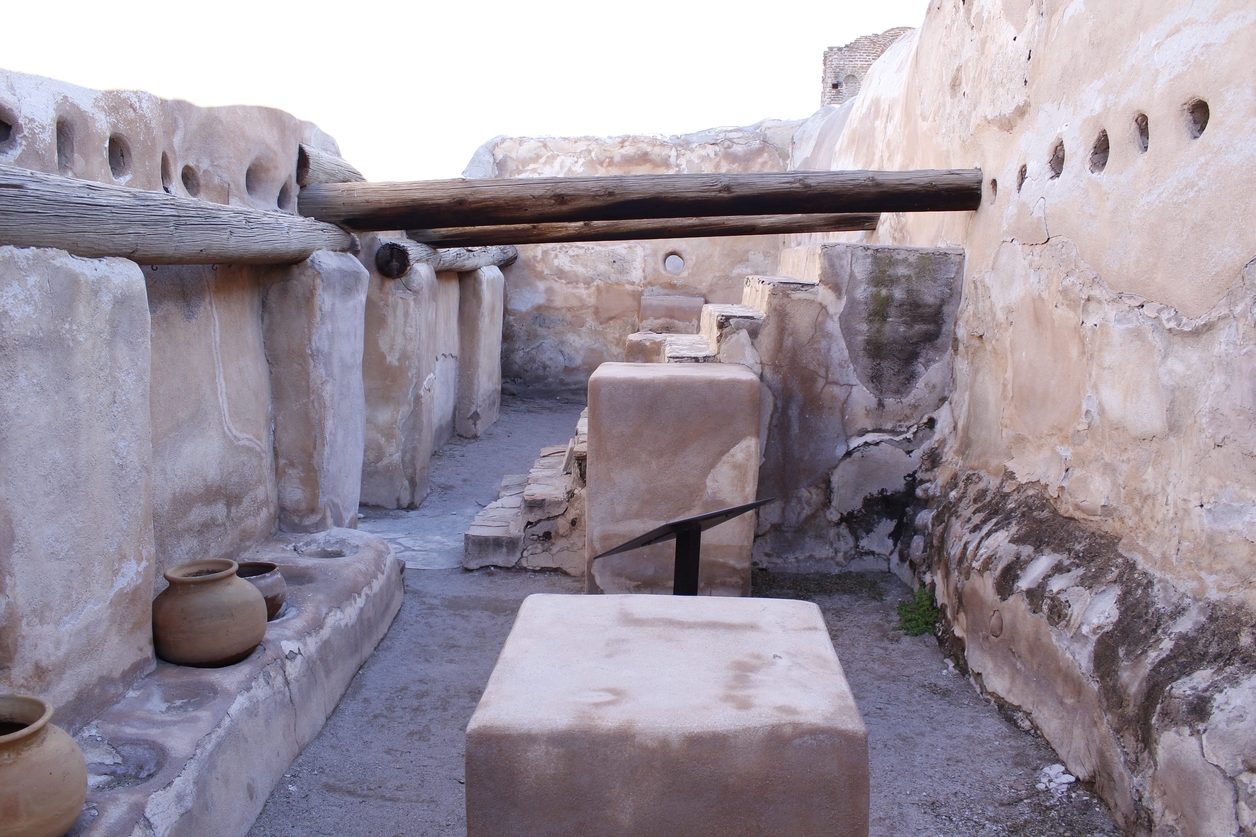Thesis: Namratha Kondam
Infrared thermography (IRT) is used as a non-destructive testing method to detect subsurface features such as defects and anomalies based on temperature differences. Recent, studies showed that IRT is increasingly being used to map moisture distribution and detect areas of moisture related deterioration in structures. This thesis studied the viability of in situ infrared thermography (IRT) to identify the presence of moisture in historic lime-plastered adobe walls. The Campo Santo at Tumacácori National Historical Park in Arizona served as an experimental model for this thesis to identify the accuracy of IRT as a rapid assessment method for moisture identification. The infrared findings were correlated with the results of indirect monitoring methods and laboratory experiments to identify the various factors affecting the thermal images. Further a comparative analysis of the thermal images was done with the contour plots of moisture and surface temperature readings taken from other indirect monitoring method such as using capacitance moisture meters. It was found that the thermal images of the Campo Santo walls at Tumacácori were greatly affected by environmental conditions and surface anomalies such as non-uniformity of surface material and their properties. Through this thesis it was proved that the additional indirect testing methods and laboratory tests were necessary to accurately interpret the IRT images. The results of this thesis proposes the future use of IRT to detect moisture patterns in historic lime-plastered adobe walls by accommodating all the factors that might affect the thermal readings.


